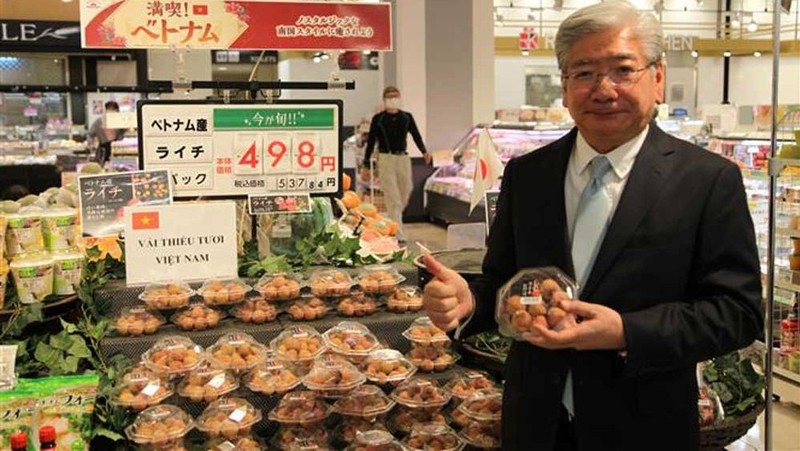>>> Hai Duong exports first batch of “thieu” lychee to Japan
>>> First batch of fresh Vietnamese lychee lands in Japan
>>> Son La exports first 30 tonnes of mango to the US, Canada and Australia
These were the first shipments of lychee that have been processed successfully and certified by Japanese experts to be eligible for export. Earlier, the experts inspected and assessed the products and the primary processing and packaging facilities at the Toan Cau (Global) Export and Import Foodstuff Joint Stock Company, as well as carefully analysed the product samples in the production unit codes (PUCs). The export of Luc Ngan lychee to Japan is considered a great success thanks to the high efforts made by Bac Giang Province’s authorities and lychee growers.
Bac Giang Province has total 28,100 hectares of lychee with an estimated volume of 160,000 tonnes in 2020. There are 15,218 hectares of lychee in accordance with safe standard (VietGAP and GlobalGAP). In addition to maintaining 149 area codes for exporting fruit to China, 19 PCUs for 103 hectares of lychee and 107 households have been accepted by the Japanese market. In the coming time, two shipments of lychee are expected to be exported to Japan per week. Accordingly, it is estimated that Bac Giang Province will export around 100 tonnes of lychee to the market this year. Thanks to the initial achievements, the burden on farmers to find a means of consumption has been reduced, as well as the worries about the serious depreciation of the fruits’ pricing when the harvest season began but the traditional markets, especially China, were stuck.
The success of Luc Ngan lychee can inspire many other localities to improve the quality and image of their flagship fruits. The authorities and enterprises should pay strong attention to applying this approach for the fruits that have not been exported to high-quality markets such as Japan, the US or Australia. Even the Chinese market now has very strict requirements on traceability, design and packaging. Therefore, if the localities are not prepared for meeting these requirements, the output of the fruits will continue to be a difficult problem.
On the other hand, the successful agricultural production in association with food hygiene and safety is one of the urgent tasks to help Vietnamese agricultural products in general and fruits in particular to be competitive with high-quality imported products once the free trade agreements take effect.
In the face of requirements for quality from the markets, it is crucial to implement strict measures from the stage of production to ensure safety standards. Accordingly, the relevant agencies should closely manage the business, trading and use of agricultural materials (fertilisers and pesticides) for fruit production. In addition, the localities should assign the specific mission to the officials in charge of production unit codes so that they will instruct, inspect and supervise the practices of farmers during production, contributing to ensuring the successful building of many fruit farming areas that granted safety certificates from their partners. It is also essential to boost the VietGAP and GlobalGAP certification processes towards simplicity and reasonable costs to encourage farmers to join. Thus, the agricultural sector’s good signs, like the case of Luc Ngan lychees being exported to Japan, will be replicated.
















